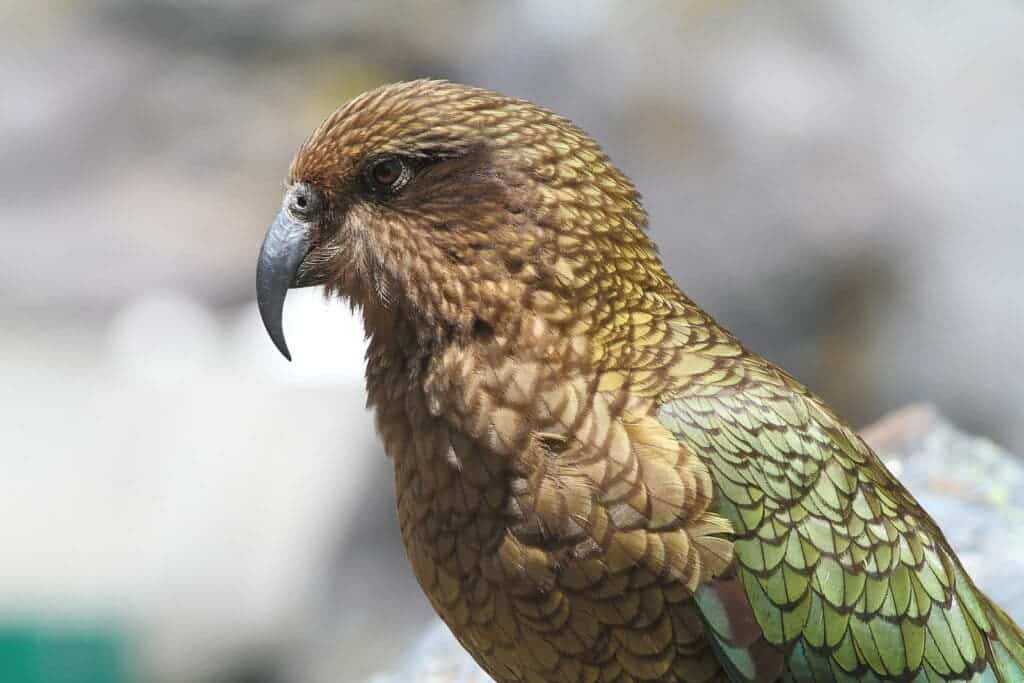The kea (Nestor notabilis), an endangered parrot from New Zealand, can use a tablet computer by licking its screen in return for rewards, researchers have found. While remarkably clever, the bird still can’t tell the difference between the real and the virtual world – the first-time researchers find evidence of animals not being able to make that distinction.

Named for the sound of its call, the kea is endemic to the Southern Alps of New Zealand and is the world’s only mountain parrot. Keas are sociable and highly intelligent birds that are well adapted to their harsh environment. Unfortunately, predation and persecution have depleted numbers, with a few thousand remaining.
The kea isn’t known to “talk” like other parrots but they are considered as smart as a four-year-old human child. They are capable of solving logic puzzles, with farmers and hikers having encountered kea that figured out how to open sliding doors and open trash cans. One disabled kea even learned how to use small pebbles to preen himself.
Researchers at the Willowbank wildlife Reserve in Christchurch worked with a group of six kea to assess whether they could perceive the real and virtual world as continuous. They are an “excellent model species,” the team said, as previous studies showed the parrots can generalize object discriminations learn from photographs to real objects.
While virtual stimulus and virtual reality are frequently used in animal testing, no study had looked before at whether animals interpret the virtual and real worlds as both equivalent and continuous or not. In humans, we learn from infancy that there’s a disconnection between what happens in real and virtual environments, studies have shown.
Understanding kea behavior
In the experiment, the researchers from Auckland University showed the group kea three different scenes: a real seesaw deposited a real spherical token into one of two real boxes, a virtual seesaw deposited a virtual token into one of two virtual boxes, or a virtual seesaw appeared to deposit a virtual spherical token into one of two real boxes.
Kea didn’t discriminate between the physical and the virtual world, and didn’t exhibit a preference for either. The birds seemed to believe that the on-screen event continued in the real world. Still, the fact that they could use the touchscreens is quite remarkable, something that was made possible by smearing peanut butter on the devices and them licking it.
With their findings, the researchers hope that breed-and-released conservation programs for the kea could be improved, helping to raise their numbers. As they are so intelligent, it’s hard for conservationists to keep them in captivity — they have to be mentally enriched all the time with new games to play, which can be tricky.
“This provides the first evidence that nonhuman animals might be naive realists. Future work could examine the performance of animals with different levels of training and testing history with screens to examine if animals ever stop behaving as naive realists, and could also test younger infants to examine if humans ever behave as naive realists,” the researchers wrote.
The study was published in the journal Biology Letters.









